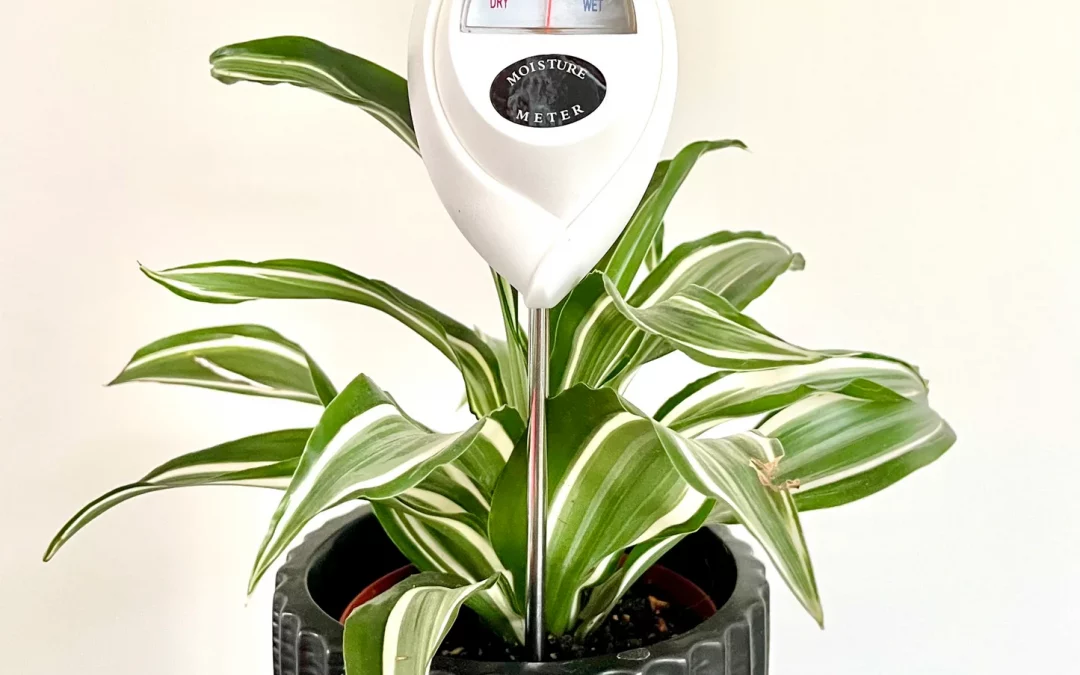How to Use Moisture Meters for Indoor Plants (Beginner’s Guide)
Watering is one of the trickiest parts of indoor plant care. Too much water leads to root rot, while too little leaves plants dehydrated and stressed. A moisture meter is an affordable tool that takes the guesswork out of watering by giving you a clear reading of your plant’s soil moisture levels. In this beginner-friendly guide, you’ll learn how moisture meters work, how to use them properly, which types are best, and why every indoor gardener should own one.
Why Use a Moisture Meter?
Many common houseplant problems come from inconsistent watering. A moisture meter helps you:
Avoid overwatering – The leading cause of plant death indoors.
Prevent under-watering – Especially useful for plants that need steady moisture.
Build confidence – Beginners don’t have to guess when it’s time to water.
Customize care – Different plants have different needs, and a meter helps you adjust.
A simple soil moisture meter on Amazon can quickly become one of the most valuable tools in your gardening kit.
How Moisture Meters Work
Moisture meters detect the electrical conductivity of soil, which changes depending on how much water is present.
Analog moisture meters use a probe and a needle dial that shows “dry,” “moist,” or “wet.”
Digital moisture meters give numeric readings and often include extra features like pH and light measurement.
Both are accurate enough for houseplant care, but analog meters are inexpensive, low-maintenance, and beginner-friendly.
Step-by-Step: How to Use a Moisture Meter
- Insert the probe gently into the soil, at least halfway to the root zone.
- Wait for the reading to stabilize (usually 1–2 minutes).
- Note whether the meter shows dry, moist, or wet.
- Compare the reading to your plant’s needs—succulents prefer “dry” before watering, while tropical plants thrive in “moist.”
- Water only when necessary, based on the reading.
- Wipe the probe clean after each use to ensure accuracy and prevent buildup.
A 3-in-1 soil tester on Amazon is especially helpful if you want to monitor moisture, light, and pH with one tool.
Which Plants Benefit Most?
Every indoor plant can benefit from a moisture meter, but some are especially tricky without one:
Tropical plants like calatheas, ferns, and peace lilies need consistently moist soil but are easily harmed by overwatering.
Succulents and cacti store water and should only be watered when soil is completely dry.
Large container plants like fiddle leaf figs or rubber plants can have dry soil at the bottom even when the surface looks wet.
Flowering plants such as orchids or African violets require precise watering schedules for blooming success.
By tailoring watering with a meter, you reduce stress and encourage stronger root development.
Best Moisture Meters for Beginners
There are three main types worth considering:
Basic analog moisture meter – Budget-friendly, simple to use, and reliable.
Digital soil moisture and pH meter – Perfect for gardeners who want detailed readings.
3-in-1 soil meter – Offers moisture, pH, and light level checks in a single device.
Pairing a soil meter with a digital hygrometer and thermometer on Amazon gives you full control over your plant’s growing conditions.
Common Mistakes to Avoid
Even with a moisture meter, errors can happen. Watch out for these pitfalls:
Inserting too shallow – Always place the probe deep enough to reach root level.
Ignoring plant type – Some plants like succulents need dry soil even if the meter reads “moist.”
Leaving the probe in the soil – Always remove and clean after use to avoid corrosion.
Using in dry air only – Remember that humidity levels also affect how often plants need watering.
FAQs About Moisture Meters
Q: Do moisture meters work in all soil mixes?
A: Yes, though results are most accurate in standard potting soil. Sandy or rocky mixes may give slightly varied readings.
Q: How often should I use a moisture meter?
A: For thirsty plants, check every 2–3 days. For succulents and cacti, once a week is usually enough.
Q: Are they safe for plant roots?
A: Yes, as long as you insert the probe carefully. Avoid forcing it through thick roots.
Q: Do I need both a digital and analog meter?
A: Not necessarily. Analog meters are affordable and effective, while digital meters are great if you prefer detailed data.
Final Thoughts on Moisture Meters
A moisture meter is one of the most valuable tools for beginner and experienced plant owners alike. It takes the guesswork out of watering and ensures your plants receive just the right amount of care. With a simple probe, you can prevent overwatering, encourage stronger root systems, and enjoy healthier, more vibrant plants.
If you’ve struggled with watering in the past, adding a soil moisture meter to your gardening toolkit will change the way you care for houseplants. Start with a basic analog model, and upgrade to a digital or 3-in-1 version if you want extra features.
For more practical tips on plant care, check the Garden Health advice on watering and caring for indoor plants.

